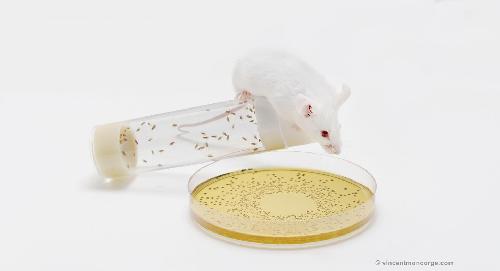Gut microbial species transferred from healthy children to mice can counter the detrimental effects caused by microbes from undernourished children. The study showing this goes on to identify certain species of microbe that offset malnutrition's negative effects, suggesting the possible role of the microbiota as a therapeutic intervention for malnutrition. For millions of children worldwide who experience the condition, one that can result in stunted growth, and that has been very hard to treat, these findings hold important implications. Previous research hints that malnutrition can impair the development of the gut microbial community, which changes as humans age. Laura Blanton, Jeff Gordon and colleagues confirmed this effect in a population of infants from Malawi, revealing that undernourished infants harbor gut communities more representative of younger, rather than age-matched, healthy individuals. They also demonstrated that an immature infant microbiota is correlated with stunted growth, compared to healthy controls. The team then took fecal samples from 6- and 18-month old Malawian infants who were either healthy or undernourished, transplanting the samples into five-week-old mice lacking any gut microbes. Mice colonized with microbiota from healthy donors gained significantly more weight and lean body mass than mice colonized with microbiota from undernourished donors. Co-housing mice with healthy and undernourished microbiota allowed the healthy microbiota to transfer into the guts of the undernourished mice and restored normal growth. Further investigation identified two species of microbes, Ruminococcus gnavus and Clostridium symbiosum, that alone fixed the impaired growth.
A second study identifies just two strains of gut microbes that keep growth hormone activity going in young mice that would otherwise exhibit hormone growth resistance because of malnourishment. The results suggest that these two microbial species might help buffer the adverse effects of chronic malnutrition. Martin Schwarzer et al. had previously identified strains of Lactobacillus plantarum microbes within the guts of fruit flies that influenced their growth during juvenile periods - when both nutrition and growth hormone signaling are critical. The team explored their effects in mice, which harbor the same strains, and particularly in germ-free mice in whom they identified significantly lower levels of growth hormone. The researchers found that while GF juveniles were unable to recover normal growth compared to controls after switching to a better diet, GF juveniles that harbored only the two aforementioned strains of Lactobacillus plantarum gained significantly more weight; in other words, the two strains were almost as effective as an entire microbiota in supporting growth in the otherwise germ-free animals. Together, the results of this study and that by Blanton, Gordon and colleagues demonstrate how an altered gut microbiome can influence growth, and how certain microbial strains may play a particularly strong role in restoring it.
 Lactobacilli strains which growth promoting functionality have been qualified in Drosophila and promote growth of infant mice. This material relates to a paper that appeared in the Feb. 19 2016, issue of Science, published by AAAS. The paper, by M. Schwarzer at Institut de Génomique Fonctionnelle de Lyon in Lyon, France, and colleagues was titled, "Lactobacillus plantarum strain maintains growth of infant mice during chronic undernutrition." Credit: Vincent Moncorgé
Lactobacilli strains which growth promoting functionality have been qualified in Drosophila and promote growth of infant mice. This material relates to a paper that appeared in the Feb. 19 2016, issue of Science, published by AAAS. The paper, by M. Schwarzer at Institut de Génomique Fonctionnelle de Lyon in Lyon, France, and colleagues was titled, "Lactobacillus plantarum strain maintains growth of infant mice during chronic undernutrition." Credit: Vincent Moncorgé
source: American Association for the Advancement of Science